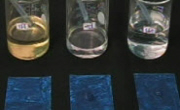(Background and Purpose) When developing and opening new harbors or repairing existing ones on a large scale, breakwaters should be expressed in aesthetics and identity so that they match local characteristics and landscapes and create an open space a...
http://chineseinput.net/에서 pinyin(병음)방식으로 중국어를 변환할 수 있습니다.
변환된 중국어를 복사하여 사용하시면 됩니다.
- 中文 을 입력하시려면 zhongwen을 입력하시고 space를누르시면됩니다.
- 北京 을 입력하시려면 beijing을 입력하시고 space를 누르시면 됩니다.
https://www.riss.kr/link?id=A106059834
- 저자
- 발행기관
- 학술지명
- 권호사항
-
발행연도
2019
-
작성언어
Korean
-
주제어
방파제 ; 친수성 ; 경관 ; 장소성 ; 비일상성 ; Breakwater ; Water-Friendly ; Landscape ; Placeness ; Non-everydayness
-
등재정보
KCI등재
-
자료형태
학술저널
- 발행기관 URL
-
수록면
105-117(13쪽)
-
KCI 피인용횟수
2
- DOI식별코드
- 제공처
-
0
상세조회 -
0
다운로드
부가정보
다국어 초록 (Multilingual Abstract)
(Background and Purpose) When developing and opening new harbors or repairing existing ones on a large scale, breakwaters should be expressed in aesthetics and identity so that they match local characteristics and landscapes and create an open space affording various opportunities for contact with the marine ecology environment and a variety of views and viewing spaces to enjoy scenery harmonized with the sea. A waterfront breakwater should be designed with the place character of an attractive marine sightseeing spot. This study aims to establish a design method for waterfront breakwater to become a place for the revitalization of a new area. This design method can be used to improve the living environment of area fishermen and port and harbor officials by utilizing the potential of fishing ports and harbors to harmonize with marine ecology and the surrounding natural environment. It also provides opportunities for those who wish to participate in and share the characteristics of the place as a marine tourism resource. (Method) The range for research is limited to waterfront breakwaters. We identified the differences and characteristics between general breakwater and waterfront breakwater, and through theoretical analysis, a design method was formulated. We then applied the method to a case study to express the identity of a waterfront breakwater through its unique scenery and the creation of an attractive use environment. (Results) It was found that the design of the waterfront breakwater can be a means to add the breakwater to the local value of leisure space and marine tourism as well as its practical economic value for local revitalization. To create a design for a waterfront breakwater, it is necessary to fashion a landscape and identity by correlating with the target site and to create a motive for participating in the place by realizing a hydrophile space with non-everydayness visual and experiential experiences for differentiated place recognition. (Conclusions) The design of the waterfront breakwater should be the reference point for the characteristics of the target area in adjusting to the degree of development. This is because it is a method of solving the problem of introducing excessive hydrophilic space and the introduction of facilities for the purpose of securing place attractiveness. The method can clarify identity by utilizing the unique resources of the region. In addition, a plan for differentiated visual and user experience should be able to highlight place value and utility value of development through physical configuration and strategic thinking, with non-everydayness based on everyday events and perception environment.
국문 초록 (Abstract)
(연구배경 및 목적) 신규항만을 개발하거나 대규모로 개·보수할 경우 방파제가 지역적 특성과 경관에 부합한 심미성과 정체성이 표출되어지고, 바다와 어우러진 자연과 생활경관을 즐길 �...
(연구배경 및 목적) 신규항만을 개발하거나 대규모로 개·보수할 경우 방파제가 지역적 특성과 경관에 부합한 심미성과 정체성이 표출되어지고, 바다와 어우러진 자연과 생활경관을 즐길 수 있는 다양한 조망·전망 공간과 해양 생태환경과의 접촉 기회는 물론 다양한 이용이 가능한 오픈스페이스를 구축하여 매력적인 해양 관광지로의 장소성을 갖는 친수형 방파제가 되도록 디자인되고 있다. 이에 본 연구는 해양생태와 주변 자연환경과 어우러진 어항과 항구의 입지적 잠재력을 친수이용환경으로 전환하여 어촌지역민과 항구·항만관계자의 생활환경개선을 위한 장소로 활용할 수 있도록 하고, 해양관광자원으로써의 장소적 특성을 부여하여 이를 공유(共有)하고자 하는 이들에게 참여의 기회를 열어주는 새로운 지역 활성화를 위한 장소가 될 수 있도록 친수형 방파제 디자인방안을 설정하고자 한다. (연구방법) 친수형 방파제로 대상적 범위를 한정하고 일반 방파제와 친수형 방파제의 차이와 특성을 발견하고, 이론적 정리로써 디자인 방안으로 정형화하였으며, 이에 따른 구성인자를 추출하여 분석의 틀을 통해 사례분석을 하여 고유한 경관성과 매력적인 이용환경에 대한 정체성이 표출된 친수형방파제 디자인 방안을 구체화 하였다. (결과) 친수형 방파제디자인은 방파제를 지역의 여가 공간 및 해양관광지로서의 장소적 가치와 지역 활성화를 위한 도구적 가치를 더할 수 있는 수단이 될 수 있음을 알 수 있었다. 이에 대상지와의 상관관계에 의한 경관 및 정체성 형성해야 하고, 차별화된 장소 인식을 위해 비일상적인 시각적, 체험적 경험을 더한 친수공간 구현으로 장소참여 동기를 형성시킬 수 있는 매력적인 친수형 방파제라는 이미지를 형성 할 수 있다. (결론) 친수형 방파제 디자인은 대상지역의 특성이 개발정도를 조정하는데 기준점이 되어야 한다. 이는 장소 매력과 집객성 확보를 위한 목적으로 무리한 친수공간 조성과 시설물 도입에 대한 문제해결의 방법이며 지역의 고유자원을 활용하여 정체성을 명확화 시킬 수 있기 때문이다. 또한 차별화된 시각적·이용적 체험을 위한 방안은 대상지역에서의 일상적 사건에 기인하여 비일상적 시·지각환경 더한 물리적 구성과 이용체계의 전략적 구상으로 장소가치와 개발의 효용적 가치를 부각시킬 수 있도록 해야 한다.
참고문헌 (Reference)
1 안유미, "장소기억 기반 문화예술공간의 재생디자인에 관한 연구" 한국공간디자인학회 11 (11): 105-117, 2016
2 서정연, "실내디자인에서 Object의 비일상성 연구 - Nigel Coates의 초기 상업공간작품을 중심으로 -" 한국가구학회 23 (23): 185-194, 2012
3 박명옥, "문화동기와 비일상성 추구성향이 문화관광지속성과 만족에 미치는 영향" 동아대학교 대학원 2001
4 Ryu, JiSeok, "Space theory and its social appropriation" SoMyung Press 2013
5 YiFu, Tuan, "Space and Place" DaeYun Press 1995
6 Ellard, Colin, "Place moves people" Gilbut Publishers 2016
7 JSCE, "Landscape Design of Waterfront" BoMunDang 2001
8 Tim, Cresswell, "JanngSo" Sigma Press 2012
9 MOF, "Guidelines for the Establishment and Management of Port Hydrophilic Facilities(draft)" Ministry of Oceans and Fisheries 2016
10 Nam, Jungho, "Establishing a Strategic Framework for CoastalScape Revitalization" Korea Maritime Institute 2014
1 안유미, "장소기억 기반 문화예술공간의 재생디자인에 관한 연구" 한국공간디자인학회 11 (11): 105-117, 2016
2 서정연, "실내디자인에서 Object의 비일상성 연구 - Nigel Coates의 초기 상업공간작품을 중심으로 -" 한국가구학회 23 (23): 185-194, 2012
3 박명옥, "문화동기와 비일상성 추구성향이 문화관광지속성과 만족에 미치는 영향" 동아대학교 대학원 2001
4 Ryu, JiSeok, "Space theory and its social appropriation" SoMyung Press 2013
5 YiFu, Tuan, "Space and Place" DaeYun Press 1995
6 Ellard, Colin, "Place moves people" Gilbut Publishers 2016
7 JSCE, "Landscape Design of Waterfront" BoMunDang 2001
8 Tim, Cresswell, "JanngSo" Sigma Press 2012
9 MOF, "Guidelines for the Establishment and Management of Port Hydrophilic Facilities(draft)" Ministry of Oceans and Fisheries 2016
10 Nam, Jungho, "Establishing a Strategic Framework for CoastalScape Revitalization" Korea Maritime Institute 2014
11 Poster, Hal, "Complex" The Imprintof New Left Books 2012
12 An, unghe, "A Study on Design Technology for Advance Water-Familiarity of Port Facilities" The Korea Association of Ocean Sience and Technology Societies 2552-2555, 2008
13 Lee, hanseok, "A Study on Busan North Port Redevelopment for Waterfront Revitalization" 5 (5): 33-40, 2005
14 안명숙, "5성급 호텔 이용에 대한 동기 빅데이터 분석: 동기이론 Push-Pull factor를 중심으로" 대한관광경영학회 31 (31): 87-104, 2016
동일학술지(권/호) 다른 논문
-
시대극에서 재현 프로덕션디자인 표현방법 연구 - 영화 <아가씨>를 중심으로 -
- 한국공간디자인학회
- 이계수
- 2019
- KCI등재
-
공간디자인 마케팅 전략으로써 공간가치 창출에 관한 연구
- 한국공간디자인학회
- 김지현
- 2019
- KCI등재
-
랜드마크의 요소가 약속장소 지정에 미치는 영향에 대한 연구
- 한국공간디자인학회
- 강경희
- 2019
- KCI등재
-
- 한국공간디자인학회
- 황용섭
- 2019
- KCI등재
분석정보
인용정보 인용지수 설명보기
학술지 이력
| 연월일 | 이력구분 | 이력상세 | 등재구분 |
|---|---|---|---|
| 2022 | 평가예정 | 재인증평가 신청대상 (재인증) | |
| 2019-01-01 | 평가 | 등재학술지 유지 (계속평가) |  |
| 2016-01-01 | 평가 | 등재학술지 선정 (계속평가) |  |
| 2015-06-01 | 학술지명변경 | 외국어명 : Journal of the Korea Intitute of the spatial design -> Journal of Korea Intitute of Spatial Design |  |
| 2015-01-01 | 평가 | 등재후보학술지 유지 (계속평가) |  |
| 2013-01-01 | 평가 | 등재후보 1차 FAIL (등재후보1차) |  |
| 2012-01-01 | 평가 | 등재후보학술지 유지 (기타) |  |
| 2011-01-01 | 평가 | 등재후보 1차 PASS (등재후보1차) |  |
| 2009-01-01 | 평가 | 등재후보학술지 선정 (신규평가) |  |
학술지 인용정보
| 기준연도 | WOS-KCI 통합IF(2년) | KCIF(2년) | KCIF(3년) |
|---|---|---|---|
| 2016 | 0.47 | 0.47 | 0.53 |
| KCIF(4년) | KCIF(5년) | 중심성지수(3년) | 즉시성지수 |
| 0.51 | 0.52 | 0.692 | 0.28 |




 KCI
KCI KISS
KISS






